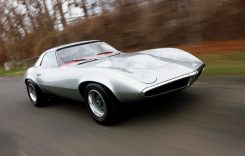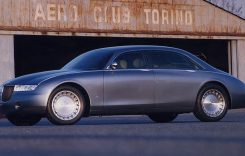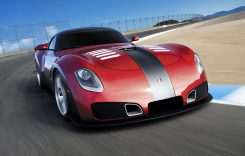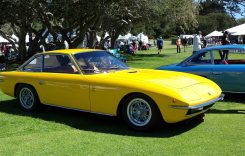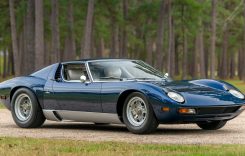Saving the environment does take big efforts after all the destruction we have caused. Global warming and ozone effect artaking their toll on our bodies and minds. Car manufacturers are now coming up with such technologies so as to partially stop use of fossil fuels. Toyota has been a pioneer in this by introducing the Prius, a vehicle which combined electric and petrol power and earned the tag of the cleanest car on the earth. The 2011 Toyota Prius currently in its 3rd generation doesn’t deviate from its core principles of fuel economy and high-technology wrapped in a futuristic four door sedan body. The Prius is the most fuel efficient gasoline car currently sold in the U.S. according to the United States Environmental Protection Agency. The EPA and California Air Resources Board (CARB) also rate the Prius as among the cleanest vehicles sold in the United States based on smog forming and toxic emissions. Sales for the Prius first started in its hometown of Japan in 1997 and then subsequently been intorduced world-wide in 2001. Plug-in capability extends a hybrid’s range on electricity alone thus saving gas Charging from residential outlets or from stronger commercial-grade connections enable a plug-in hybrid to run longer on battery power and delay running the engine on gas power. A full charge could take 8 hours or more and currently technology is been developed to reduce this time. Plug-in systems depend on advanced lithium ion batteries.Unfortunately the 2011 model doesn’t have full plug-in capability though Toyota has plans to release 150 experimental plug-in Priuses by the end of 2010. The first ownership would be given to government fleets and corporates.

Looks
The styling for the 2011 Prius doesn’t deviate far from the 2010 model. There are no visual changes in the 2011 model save for the front end having a more sober look and not going by the family face which the Corolla and the Camry sport. The Prius looks every inch a space machine. The looks gell well with the car’s technical aspects as also announces its credentials in been a harbinger of technology. The rakish windscreen and shape is very aerodynamic contributing to making the Prius the the most aerodynamic car in the world. Its drag coefficient is 0.25. We tested the Prius V model which was the highest spec. It had the bluish self-leveling headlamps with energy-saving Light Em itting Diode (LED) illumination. Those did a very good job of illuminating the road ahead. The side sports two creases in the name of aerodynamic efficiency. For the record, this consume 17% less power. The roof is the same height, but its apex is moved back 3.9 feet further aiding the aerodynamic part. The double hump for the car suggests crossover. The tailamps are also a nicely clustered lot. There is a huge rear wiper added which helps cleans the rear glass effectively. The car has a front and rear quarter glass which adds to the character of the car.
One thing which doesn’t contribute to the looks aspect or is visible, but helps achieve aerodynamic efficiency is the underbody covers with splitters. The car rides on 17 inch wheels as opposed to the 15 inches earlier and low rolling resistance tires have joined the party.
Interiors
The interiors of the 2011 Prius are vastly unchanged from the 2010 model. It looks like a snazzy cockpit and complements the exterior and image of the car. The heads up display projected on to the car’s windscreen actually looks sci-fi. The 5 inch wide screen displays various information such as Energy Monitor, battery charge in real time, a Hybrid System Indicator that shows how efficiently you are driving, fuel mileage in 1- or 5-mile increments, past fuel mileage and a Touch Tracer Display that projects steering-wheel-control information onto the windscreen so you can safely drive without taking your eyes off the road. The steering wheel is reminiscent of a space age joy stick and is grippy and nice to hold. It has audio and cruise controls on it. The seats themselves are made of plant-derived resin which is an ecologically friendly plastic with excellent recycling characteristics. The stubby gear lever is also funky and there are many cubby holes to hold your knip knacks. The upper and lower gloveboxes hold a splendid 12 liters. It seems that the button for seating the front seats was put on as an after thought as it is located beneath the front seats. There’s 20 mm more legroom for the backseat passengers , partly due to thinner front seatbacks. There is enough space for 5 though three at the rear would be a squeeze. The rear seats have a 60/40 split seating arrangement. This gives it a load capacity of 39.6 cubic feet. The loading lip for the big tailgate though is small so cargo volume is less than in most similarly sized hatchbacks. A small bin beneath the cargo floor compensates somewhat though.

There is no problem with forward visibility because of the raked windscreen however taking a reverse would be a pain in the neck due to the aerodynamically sloped roofline. The Solar Roof Package is an innovative feature which combines a power sliding glass moonroof with solar panels. It packs in enough energy to run an air-circulation fan while the car is parked, thereby reducing air-conditioning loads. USB port has now been made standard across the range.
Handling and ride quality
The Prius though aerodynamic was never designed keeping in mind corner carving enthusiasts. If you are an enthusiast, you would never buy the Prius simply because it is for those looking for higher mileage and with a conscience for saving the environment. The Prius is nose heavy and add to that a steering feel devoid of much feel and you get a car in which you would think twice before executing emergency lane change maneouvrs.
Don’t get us wrong, the 2011 Prius can go around corners well due to its new and improved chassis composition but not aggressively. Technically saying it has lost some weight{65 pounds}in the hybrid components thing but also has gained 110 pounds from its chassis. So the weight loss has been countered making the Prius nose-heavy. The new suspension has slightly wider track and increased roll rigidity. The ride was a tad stiff but not uncomfortable. This can be attributed to the new 17 inchers and low resistance tires. Toyota could have done well by adding some feel to the steering wheel and putting in soft setting for the dampers.

Engine,Performance and fuel efficiency
The mechanicals remain unchanged from the 2010 model. A 1.8 liter gas engine with 4 cylinders supported by a 36Kw electric motor bumps up the power to 134 ponies. This engine has been designed to run very efficiently at low rpms to increase the mileage. CO2 emissions which was a class lowest have still been reduced due to friction saving molybdenum coating on the piston rings. The AC compressor and water pump are now driven electrically so that the AC runs even when the engine is off. he Hybrid Synergy Drive system, with two compact motor generators within the transaxle, increases operating voltage from 500V to 650V. Gear drive replaces chains in the motor, increasing the motor’s rpm to 13,500 from 6400. The improved Power Control Unit (inverter) is more compact and runs cooler than the previous one. The Nickel-Metal Hydride battery pack is more compact and powerful, like all the rest. All this tech fest has resulted in savings of about 65 pounds.
There are three modes driving this vehicle. EV, ECO and POWER. The car starts by default in POWER mode. In EV mode, you can potter around in town in speeds of upto 25mph. This is only if your battery has enough juice in it. The energy meter on the heads up display shows how to drive your Prius to eke the maximum fuel efficiency out of it. EV mode is usually used for underground parking chores or simple bumper to bumper traffic. ECO mode maximises fuel efficiency by reducing the throttle opening and restricting the air conditioning. POWER mode is for full acceleration. ECO mode has to be set up at every halt as the moment you stomp on the accelerator, the POWER mode comes into play. Since the Prius uses a CVT transmission where it doesn’t have a gear, the transition to POWER mode is more like a transmission kick-down. The shifts are smooth and there is no loss in power during shifts. The more you brake or encounter traffic, the more your chances of charging the batteries and getting the maximum average. The start stop also doesn’t make any noise and the Prius also keeps pace with the rest of the traffic without any hullaboo.
The Prius has the best EPA rating of all vehicles. It averages 50mpg in the city which is its domain and 48 on the higways.
Verdict
The Toyota Prius 2011 would be competing against the likes of Ford Fusion Hybrid, Honda Insight and its stable mate the Toyota Camry Hybrid. The price range is expected to be around $21,995-$28,300. The Honda Insight has a base price of $20,510 and even though the Toyota is pricier than the Honda, it gives an immediate buck for your money. It is the pinnacle of automotive technology while giving you a clear conscience that you are doing your bit in conserving your environment and probably giving the polar bears a month or so of restful sleep everytime you drive a hybrid or electric car.
![]()
